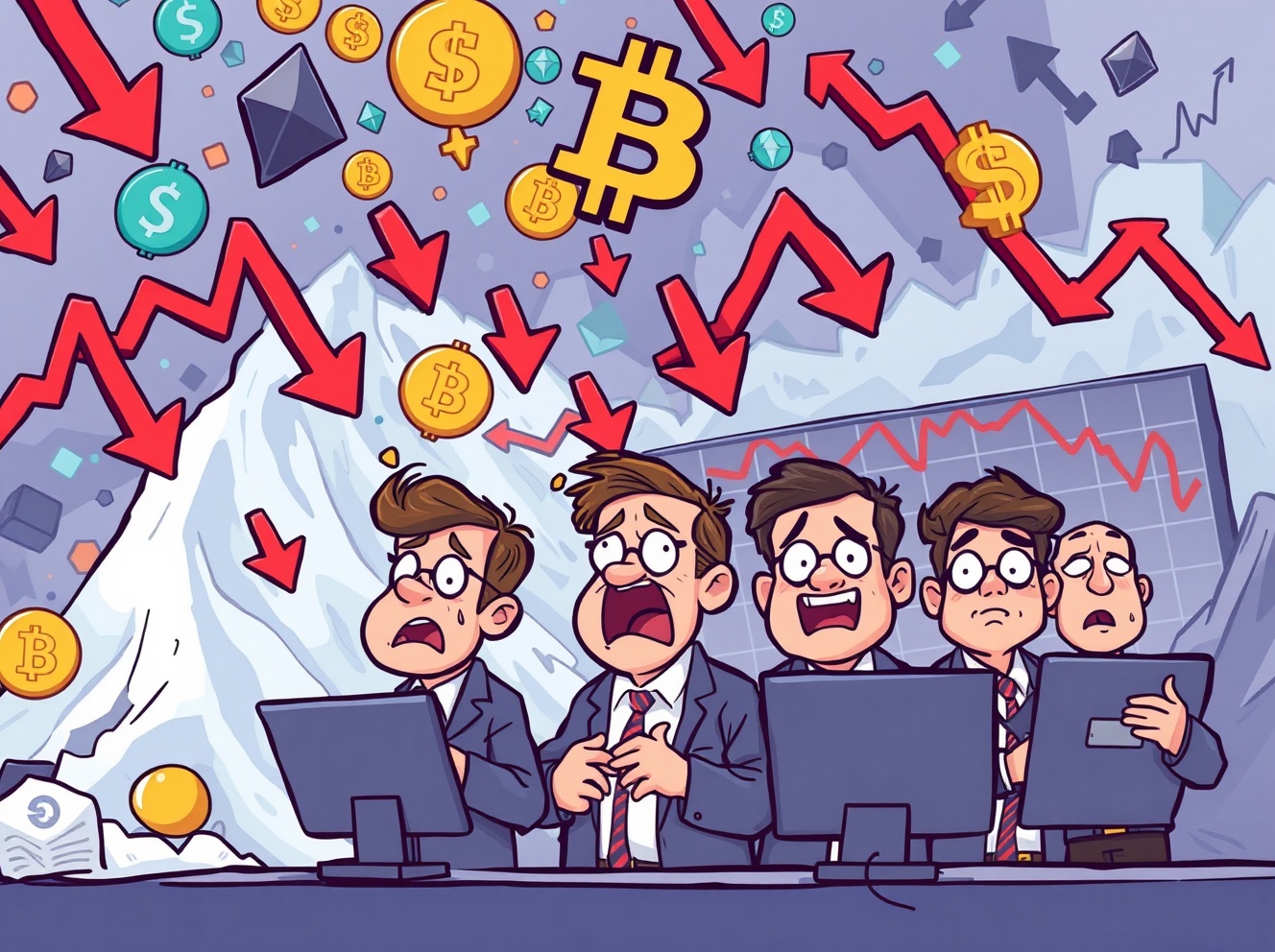Massive Crypto Futures Liquidation: $717 Million Wiped Out in 24 Hours
BitcoinWorld
Massive Crypto Futures Liquidation: $717 Million Wiped Out in 24 Hours
The cryptocurrency market is a dynamic space, often characterized by rapid price swings and significant events. Recently, traders witnessed a staggering financial tremor: a massive crypto futures liquidation event that sent ripples across major exchanges. Imagine millions of dollars vanishing in moments – that’s precisely what happened, leaving many in awe and others counting their losses.
What is Crypto Futures Liquidation and Why Does It Matter?
Before diving into the specifics of the recent events, it’s crucial to understand what crypto futures liquidation entails. In simple terms, futures contracts allow traders to bet on the future price of a cryptocurrency without owning the underlying asset. They often use leverage, meaning they trade with borrowed money to amplify potential gains. However, leverage also magnifies losses.
- Margin Calls: When the price of an asset moves against a trader’s leveraged position, their margin (the collateral they put up) starts to deplete.
- Automatic Closure: If the loss reaches a certain point, the exchange automatically closes the position to prevent the trader from losing more than their initial margin. This forced closure is known as liquidation.
- Market Impact: Large-scale liquidations can create a cascade effect, pushing prices down further as these positions are closed, which in turn triggers more liquidations.
Therefore, a significant crypto futures liquidation event indicates high volatility and can signal shifts in market sentiment.
Unpacking the Recent Crypto Futures Liquidation Spree
The past 24 hours have been particularly turbulent for futures traders. Major exchanges reported an astonishing $137 million worth of futures contracts liquidated in just a single hour. This rapid-fire event was merely a snapshot of a larger trend, as the total figure for the past 24 hours soared to an eye-watering $717 million. This substantial amount highlights the intense price movements and leveraged trading activity that characterized the market during this period.
Such massive liquidations typically occur when an unexpected price movement catches a large number of leveraged positions off guard. Traders betting on one direction find their positions underwater as the market shifts sharply in the opposite direction. This often leads to a ‘long squeeze’ (when prices fall, liquidating long positions) or a ‘short squeeze’ (when prices rise, liquidating short positions).
How Does This Impact Crypto Traders?
For individual traders, these liquidation events carry significant implications. The immediate consequence for those caught on the wrong side of the market is the loss of their staked capital. Moreover, the fear and uncertainty generated by such large liquidations can influence market psychology, potentially leading to further selling pressure as traders become more risk-averse.
Understanding the dynamics of crypto futures liquidation is vital for anyone participating in the derivatives market. It underscores the inherent risks of leveraged trading and the importance of robust risk management strategies. While the allure of amplified gains is strong, the potential for rapid and substantial losses is equally present.
Navigating Volatility: Strategies After a Crypto Futures Liquidation
In a market prone to such dramatic swings, how can traders protect themselves? Adopting a disciplined approach is paramount. Here are some actionable insights:
- Effective Risk Management: Always define your risk tolerance before entering a trade. Never risk more capital than you can afford to lose.
- Utilize Stop-Loss Orders: These automated orders help limit potential losses by closing a position once it reaches a pre-defined price. This is a critical tool to prevent being entirely wiped out by a sudden market move.
- Manage Leverage Wisely: While leverage can be tempting, using it judiciously is key. Higher leverage means higher risk of liquidation.
- Diversify Your Portfolio: Do not put all your eggs in one basket. Diversifying across different assets can help mitigate risks associated with single-asset volatility.
- Stay Informed: Keep an eye on market news, technical indicators, and broader economic trends that can influence cryptocurrency prices.
These strategies are not foolproof but can significantly reduce exposure to the severe impacts of a crypto futures liquidation event.
The recent $717 million crypto futures liquidation serves as a stark reminder of the volatile nature of cryptocurrency derivatives markets. While opportunities for substantial gains exist, they are invariably accompanied by significant risks. For both seasoned traders and newcomers, a clear understanding of liquidation mechanisms, coupled with stringent risk management practices, is essential for navigating these turbulent waters successfully. Staying informed and trading responsibly will always be your best defense against unexpected market shocks.
Frequently Asked Questions (FAQs)
Q1: What exactly causes a crypto futures liquidation?
A: A crypto futures liquidation occurs when a trader’s leveraged position loses so much value that their margin (collateral) can no longer cover potential losses. The exchange then automatically closes the position to prevent further debt.
Q2: How does leverage contribute to futures liquidation?
A: Leverage allows traders to control larger positions with a smaller amount of capital. While this can amplify profits, it also significantly magnifies losses, making positions more susceptible to liquidation with even small adverse price movements.
Q3: Are all cryptocurrencies equally affected by futures liquidation events?
A: No, the impact varies. Cryptocurrencies with higher trading volume and more active futures markets, such as Bitcoin and Ethereum, often see larger liquidation amounts during volatile periods compared to smaller, less liquid altcoins.
Q4: Can I prevent my futures position from being liquidated?
A: You can minimize the risk by using lower leverage, setting stop-loss orders, and adding more collateral (margin) to your position if it approaches liquidation levels. However, no method guarantees complete prevention in extreme market conditions.
Q5: What’s the difference between a long squeeze and a short squeeze in the context of liquidation?
A: A long squeeze happens when prices drop sharply, forcing the liquidation of ‘long’ positions (bets on rising prices). A short squeeze occurs when prices surge, forcing the liquidation of ‘short’ positions (bets on falling prices).
If you found this article insightful, consider sharing it with your network! Understanding market dynamics is crucial for everyone in the crypto space. Help spread awareness by sharing this piece on your social media channels.
To learn more about the latest crypto market trends, explore our article on key developments shaping Bitcoin price action.
This post Massive Crypto Futures Liquidation: $717 Million Wiped Out in 24 Hours first appeared on BitcoinWorld.
You May Also Like

CEO Sandeep Nailwal Shared Highlights About RWA on Polygon

Metaplanet raises $1.4B to fuel BTC purchases and U.S. subsidiary launch
